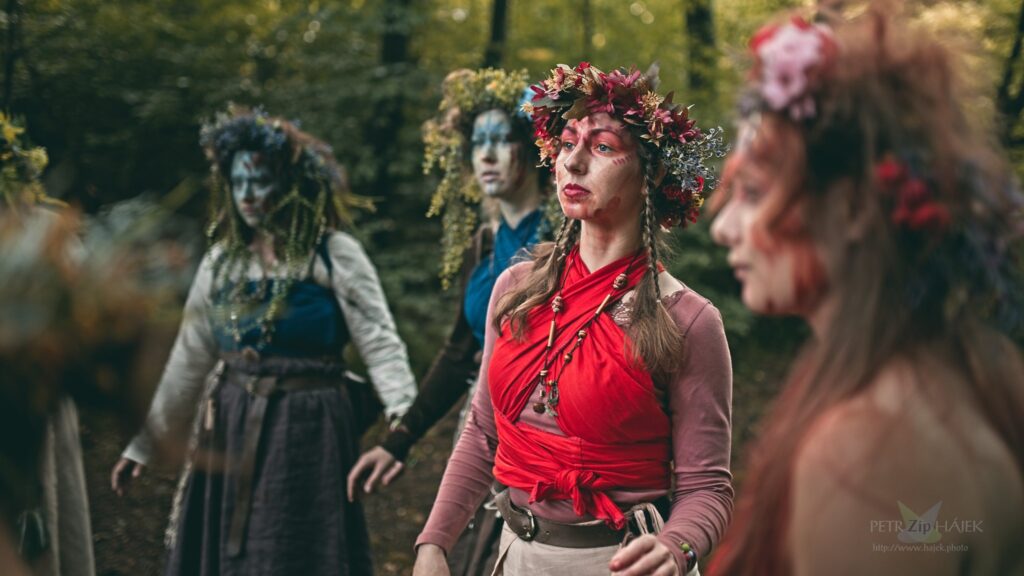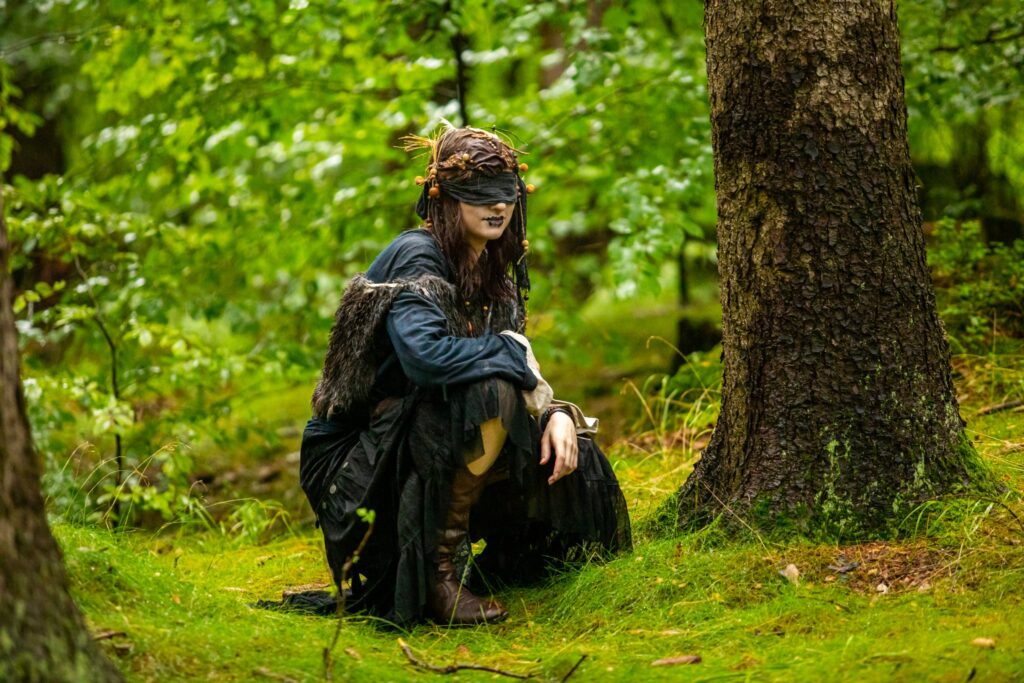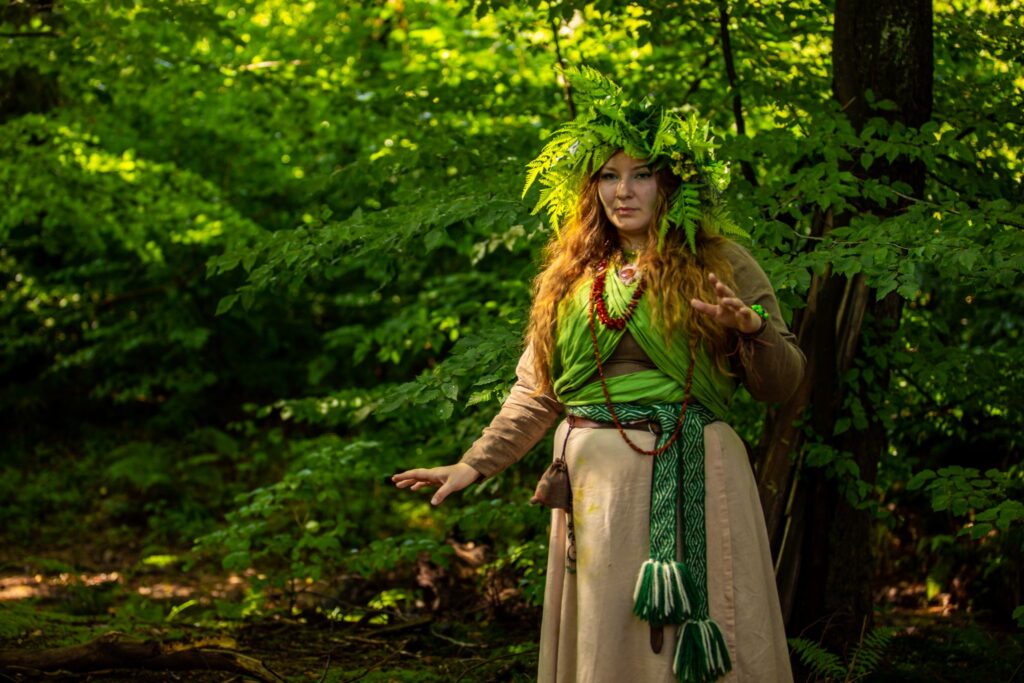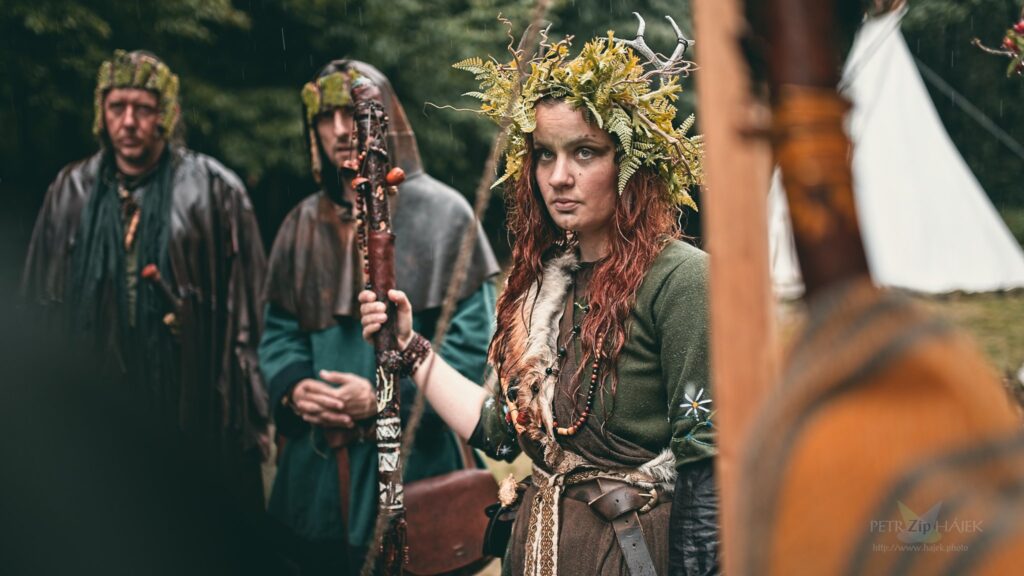 Heart of the Forest
Heart of the Forest
Since ancient times, the Children of the Forest have lived peacefully within their woodland realm. They ruled it, and it responded to their will. But then the world changed. From the north came the People of the Plains, bringing fire and destruction. The Forest People, fragmented and ununited, could not stand against them. Trees were burned or cut down, giving way to fields and settlements. Sherbor became the last refuge for those who sought not just survival, but the restoration of the old ways.

Heart of the Forest was not a spontaneous idea. It emerged after many years of exploring this theme in our previous games. In those, forest creatures inspired by Slavic mythology—leshies, heykals, and fairies—often appeared as the original inhabitants, displaced by humans. These games were typically told from the human perspective, portraying either their efforts to exterminate these beings or their struggle against the creatures’ understandable anger and desire for revenge. This time, we decided to flip the narrative and tell the story from the other side.
Our goal was to create a larp in which players would not portray humans, but entirely different beings with their own values, behaviors, and ways of life. Given the „primal„ nature of these forest folk, it was clear that the game would center around tribal motifs, rich in shamanism, hunting, and wildness. We drew inspiration from various traditional cultures, including those from Africa, the Americas, and Oceania. The result was a larp that was not easy to design, but extremely rewarding to create.

The Nonhuman World
The story revolved around the theme of the Children of the Forest. They tried to defend themselves from the invasion of the humans. To drive them away, they turned to magic, some try to summon demons from the world of dreams, others opposed it. They eventually encountered humans, but realized that they do not have the strength to fight what is coming. The end of the game is therefore quite sad, however, there is still hope that at some point in the future the world will change. At the end, the players choose whether to wait out the disaster in the form of humans locked in mounds, go to serve the demons in the world of dreams, or continue the guerrilla struggle.
The foundations were already laid in our earlier work. Players could choose to play leshies—powerful rulers of the forest, fairies—enchanting yet dangerous beings skilled in healing and magic, or heykals—fierce, animalistic hunters. Each clan typically included one leshie, several fairies, and a number of heykals. Despite their different roles, the game encouraged the races to spend time together and function as a community. Leshies were meant to uncover the forest’s secrets and wield magic; fairies to heal, beguile, and perform rituals; and heykals to undertake trials and hunt.
As we developed these beings further, it became increasingly clear how differently they would behave compared to humans. Their society had a unique structure, with power and roles distributed in unfamiliar ways. Gender was also reimagined: if heykals represented „men„ and fairies „women,„ then leshies formed a third gender—the only one capable of reproducing with fairies. This led to a much more nuanced system of romantic and social relationships. For instance, the bond between a fairy and a leshie held a very different meaning than that between a fairy and a heykal.
To support this world, we created a range of unique systems that replaced human social norms. Fairies carried colored magical stones („tals„) representing their power and status. Heykals were defined by their totem animals, shaping their personalities and instincts. Leshies were deeply connected to ancestral spirits. All characters had access to inhuman traits and magical abilities. Many of these concepts didn’t have direct Czech equivalents—what do you call, for example, a forbidden relationship between a fairy and a heykal in human terms?—so we developed a fictional language for the forest folk, drawing from Indian and Sumerian linguistic roots.
As the game grew, so did the number of unfamiliar terms and concepts. We worried whether players would be able to remember everything and whether the complexity might reduce their enjoyment. Fortunately, our fears proved unfounded. Players came into the game expecting to portray nonhuman beings, and they were ready to learn. Many of the mechanics and themes we explore (or choose not to support) are available on our website for further reading.
Beyond ideas and mechanics, we also wanted to bring inhuman behavior to life. Fairies were taught to move in fluid, dance-like ways (I still don’t understand how they do it—it looks like real magic), while heykals learned to growl, snarl, and speak in the third person. Once again, we were unsure if we were asking too much of the players—and once again, we were pleasantly surprised. Not only did they embrace the challenge, but many of them exceeded our expectations, expressing themselves in ways even wilder and more mystical than we had imagined.

Atmosphere and Wildness
At the heart of the story is a simple yet powerful motif: humans have entered the territory of the forest folk, seeking to destroy or enslave them. But we didn’t want to depict the forest creatures as noble victims facing an evil enemy. Quite the opposite—the goal was to present wild, monstrous beings who are attacked, yes, but are far from innocent. Players were encouraged to embrace their characters’ primal nature, with opportunities to show both brutality and feral intensity.
Since this is a content-driven dramatic game, immersion and cooperation were essential. Spells and magic worked not because of elaborate mechanics, but because everyone believed in them and played along. Similarly, the ability to provoke and experience deep emotions relied on mutual engagement and commitment.
The „primitive„ setting played a key role in building this atmosphere. The world of the forest people exists somewhere on the cusp between prehistory and early antiquity. In such a world, it felt completely natural to invent bloody rituals involving enemy sacrifice, terrifying creatures lurking deep within the woods, and fierce war dances. The game isn’t meant to be horror in the traditional sense—it doesn’t rely on fear. Instead, it’s more of a reverse horror, where players become the ones who create fear.
The Creative Process
The writing and preparation of the game followed a fairly standard process, much like our previous projects. We had a solid team, and while not everything went perfectly—deadlines were occasionally missed—each member brought something valuable to the table and remained dedicated throughout development.
Interestingly, unlike many other creative teams, we still rely on shared OpenOffice documents. I usually justify it by saying the platform has more functions—but if I’m honest, it’s mostly because I dislike changing my habits. I’ve been writing games in Word and Excel for as long as I can remember (with the exception of a few of our very first games, which were born in T602 before the days of Windows).
One innovation in our workflow was the character creation method. Instead of writing each character individually, we used a single shared document with modular segments. Each piece of backstory was tagged with the relevant characters and could have different versions depending on whose perspective it reflected. This system took some time to get used to, but it ultimately made revisions much easier and streamlined the editing process.
From the beginning, the game was designed to be modular, allowing us to easily add new characters or even entire groups. After the beta test, we were able to seamlessly introduce another family into the narrative.

Challenges and Limitations
If we had to name one thing we didn’t love, it would definitely be the weather. During the beta test, we were forced to evacuate due to flooding. The first official run nearly faced a hurricane—an evacuation center was even prepared for us—though in the end, the storm passed us by, and we were left with “just” a torrential downpour that flooded part of the tents. The second run brought no disasters, but it rained steadily all day without a break.
One of the game’s main limitations is that it truly has to be played in a forest. Its charm doesn’t translate well to tents or clearings. As a result, players often got completely soaked during heavy rain. It’s genuinely impressive how many of them stayed in character, didn’t break immersion, and even pretended to enjoy themselves despite being drenched. Future runs are planned at a new location, as the original one in the Jizera Mountains is among the rainiest spots in the country.
Another challenge is the game’s spatial and temporal complexity. It’s divided into several phases, each taking players to a different part of the forest. There are also a number of non-player characters who appear in various locations throughout the terrain. The phases aren’t strictly timed—since players can’t exactly check their watches in the woods—and transitions are marked by the striking of a gong. In the first run, people occasionally got lost. But by the second, things ran more smoothly, and we’re confident that future runs will be even better.
Heart of the Forest (Srdce lesa)
When: 2022 and 2023
Authors: Adam Slabecký, Anna Slabecká, Raila Hlavsová, Anna Müllerová, Leoš Kyša, Michaela Hrabáková
Number of Players: 37
Contact: srdcelesa@awainqerch.cz